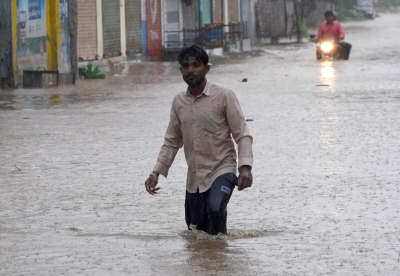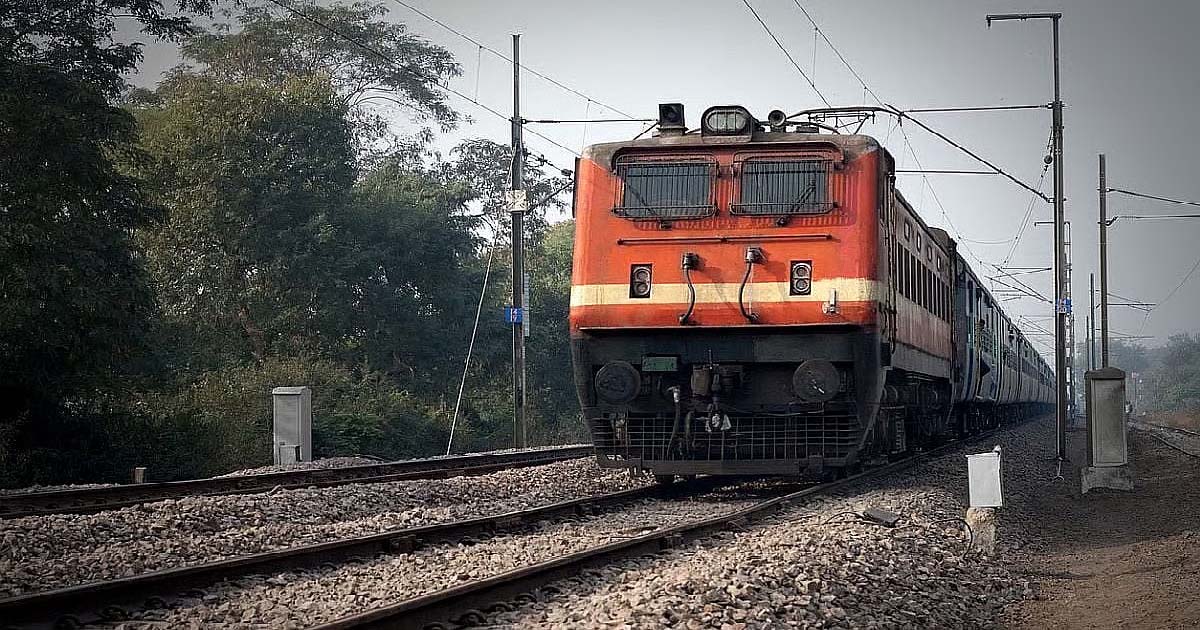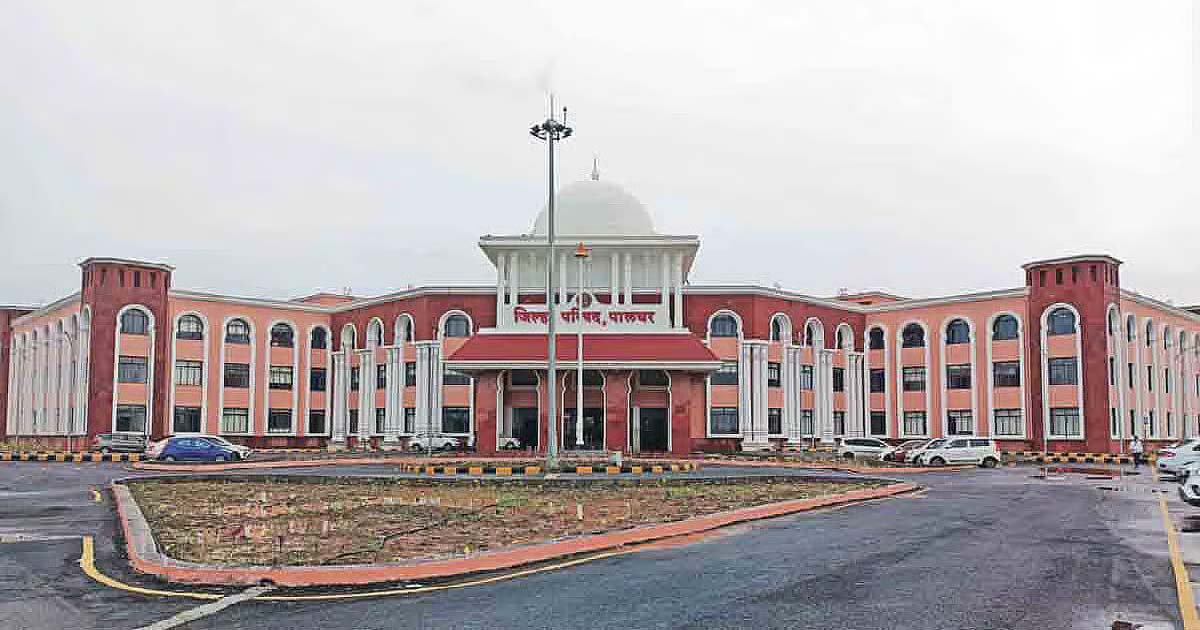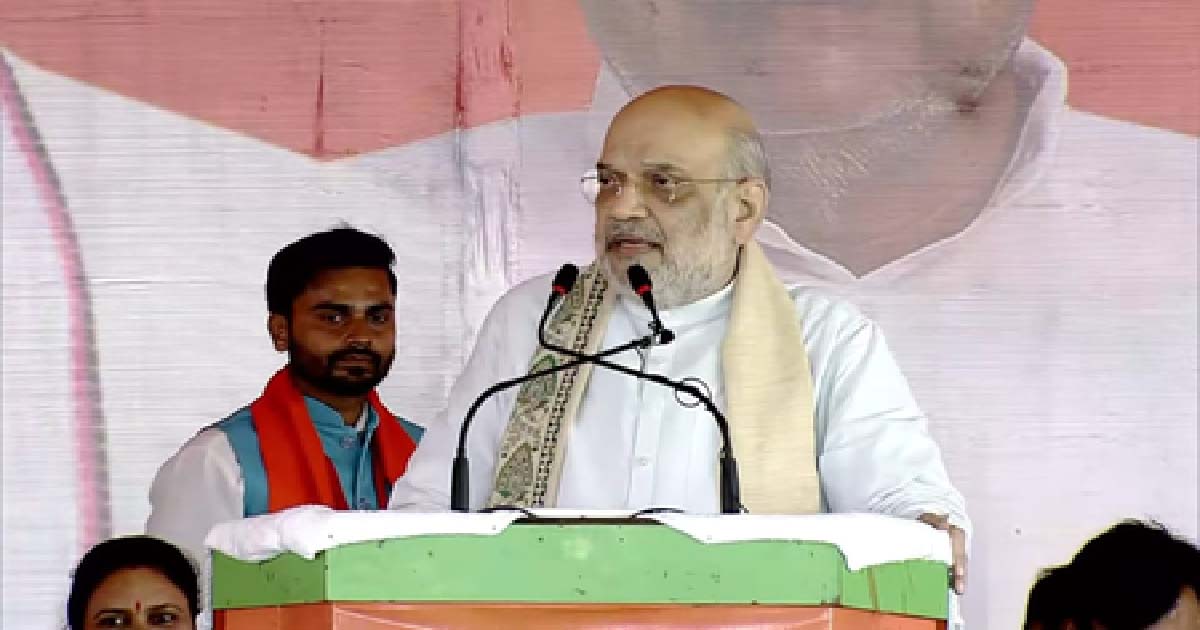National News
Cyclone Biparjoy breaks 105-year-old rain record in Ajmer

Cyclone Biparjoy has smashed a 105-year-old record of rainfall in Ajmer in the month of June, according to the Jaipur IMD Director Radheshyam Sharma.
On June 17, 1917, a total of 119.4 mm of rainfall was recorded in Ajmer in a single day — marking the highest for the month of June.
This record was broken after Ajmer received 131.8 mm of rain in a span of 24 hours from 8.30 a.m. on Sunday to 8.30 a.m. on Monday, Sharma told.
For the first time in Rajasthan, there is a flood-like situation before the monsoon.
In four days, cyclone Biparjoy has triggered rain in many areas due to which Barmer, Pali, Rajsamand, Bhilwara, and Ajmer have been left flooded.
In the last 24 hours, Pali’s Muthana received 530 mm of rain.
Meanwhile, several villages of Bundi, Ajmer, Bhilwara were without electricity.
The Meteorological Department has issued a red alert for Tuesday in Kota, Baran-Sawai Madhepur.
A 12-year record was also broken in Jodhpur after the city recorded 91.3 mm of rainfall on June 17.
The previous record was reached on June 28, 2016, when there was about 74 mm of rain.
The state received an average of 100 mm of rainfall from June 16 to 19 triggered by the cyclone, which is about 24 per cent of the average rainfall during the monsoon season.
Rajasthan receives an average of 415 mm of rainfall during the monsoon season (June to September).
The initial month of June receives an average of 50 mm of rain.
National News
Central Railway Announces Night Traffic And Power Block Between Kalyan And Badlapur On November 7-8

Mumbai: Central Railway’s Mumbai Division will operate a Special Traffic and Power Block at four different locations between Kalyan and Badlapur to carry out essential maintenance work. The block will be implemented over two consecutive nights this weekend.
Dates: November 7/8 (Friday–Saturday night) and November 8/9 (Saturday–Sunday night)
Time: 1:50 a.m. to 3:20 a.m. (duration: 1 hour 30 minutes)
Section Affected: Up and Down South-East lines
Several UP Mail/Express trains will be diverted via Karjat–Panvel–Diva during the block period. These include:
Train No. 11020 Bhubaneswar–CSMT Konark Express
Train No. 18519 Visakhapatnam–LTT Express
Trains scheduled to halt at Kalyan will be provided alternate halts at Panvel and Thane to assist passengers boarding or alighting at Kalyan.
Train No. 12702 Hyderabad–CSMT Hussainsagar Express will be regulated at Vangani station from 3:13 a.m. to 3:20 a.m.
Mail, Express, and Holiday Special trains running late will be diverted as per operational requirements, Central Railway said.
Suburban train operations will also be affected during the maintenance period. Services will not be available between Kalyan and Karjat stations while the block is in force.
Cancelled:
CSMT–Ambernath local leaving CSMT at 12:02 a.m.
Ambernath–CSMT local leaving Ambernath at 10:15 p.m.
Short Terminated:
CSMT–Karjat local leaving CSMT at 12:12 a.m. will terminate at Thane.
Short Originated:
Karjat–CSMT local leaving Karjat at 2:30 a.m. will originate from Thane at 4:00 a.m.
Central Railway has urged passengers to take note of these temporary changes and plan their travel accordingly to avoid inconvenience.
National News
Palghar Administration Gears Up For December 2 Civic Polls Across Four Areas

Palghar, Maharashtra: The Palghar district administration has announced full preparedness for the upcoming municipal council and nagar panchayat elections scheduled for December 2, with counting on December 3. The Model Code of Conduct has come into force across all four election areas Palghar, Dahanu, Jawhar, and Wada where polling will take place.
District Collector and Election Officer Dr. Indurani Jakhar confirmed that all necessary arrangements have been made, including the deployment of flying squads to monitor potential violations of the code of conduct.
Ward-wise voter lists are set to be released today, November 7, and polling preparations have begun in earnest.
Elections will be held for directly elected chairperson posts in all four local bodies.
The Palghar Municipal Council seat has been reserved for Backward Class citizens.
Dahanu is reserved for the general category.
Jawhar and Wada are reserved for women (general category) candidates.
According to official figures: Palghar Municipal Council: 55,727 voters will elect 30 members, Dahanu Municipal Council: 38,693 voters will elect 27 members, Jawhar: 9,347 voters will elect 20 members, Wada Nagar Panchayat: 12,893 voters will elect 17 members.
A total of 55 wards across the four civic bodies will go to polls, with 125 polling booths to be established.
The State Election Commission (SEC) has implemented measures to prevent duplicate voting. Voters with duplicate entries will have two asterisks () marked against their names and will be permitted to vote only once.
The administration is also ensuring that voters from villages adjacent to municipal areas are not mistakenly included again in future Zilla Parishad elections.
Addressing concerns raised by political parties over alleged voter list discrepancies, Dr. Jakhar clarified that most issues were the result of data-entry or technical errors.
“These discrepancies will be rectified only after SEC approval through a supplementary list. The total voter count remains unchanged, and all verified data are accurate,” she stated.
To ensure free and fair elections, flying squads have been deployed under the supervision of election officers.
The SEC has directed webcasting and CCTV surveillance at select polling stations, while grievance redressal cells have been set up in each municipal area to address voter complaints.
The district administration has confirmed an adequate supply of EVMs, control units, ballot units, and memory cards to ensure the smooth conduct of polling and counting.
National News
RJD’s ‘jungle raj’ eyeing return in new form: Amit Shah at Bhagalpur rally

Patna, Nov 7: Union Home Minister Amit Shah on Friday tore into the Rashtriya Janata Dal (RJD) and warned the people of the return of “jungle raj”, if Lalu Yadav’s party-led Grand Alliance (Mahagathbandhan) returns to power in the state.
Amit Shah, addressing a poll rally in Bhagalpur’s Pirpainti, said that the “jungle raj” era of RJD may have been relegated to the margins for years now, but it was raring for a comeback in a new form and shape and warned people not to fall for “lofty and populist” promises of the Mahagathbandhan.
“Your one vote will strengthen them and will add to their efforts to bring back jungle raj,” HM Shah said, slamming the RJD-Cong combine.
He also called out the “tainted” record of Mahagathbandhan leaders (Rahul Gandhi and Tejashwi Yadav) and claimed that their guardians were eager to get their wards seated in positions of power.
“They engage in corruption; we engage in development. Lalu ji wants to make his son the Chief Minister and Sonia ji wants to make her son the Prime Minister,” he said.
“But listen to my words with your ears wide open, neither Rahul will become the Prime Minister nor Tejashwi will be able to become the Chief Minister. Because Modi ji is in Delhi and Nitish Kumar ji is in Bihar,” he added.
The Home Minister also drew a contrast between the ‘jungle raj’ of the RJD era and the ‘sushashan’ under the Nitish government, listing several schemes and programmes launched by the double-engine government to empower the poor and farming class.
“We have established the Makahana Board. Along with power plants, the Barauni plant has been revived, and some sugar mills have also been revived,” he said.
He also reiterated the Centre’s pledge to set up sugar mills in the areas of the state with adequate water levels.
“People of Bhagalpur, wherever there is water, the Modi government will start the work of operating 25 new sugar mills,” he said.
-

 Crime3 years ago
Crime3 years agoClass 10 student jumps to death in Jaipur
-

 Maharashtra1 year ago
Maharashtra1 year agoMumbai Local Train Update: Central Railway’s New Timetable Comes Into Effect; Check Full List Of Revised Timings & Stations
-

 Maharashtra1 year ago
Maharashtra1 year agoMumbai To Go Toll-Free Tonight! Maharashtra Govt Announces Complete Toll Waiver For Light Motor Vehicles At All 5 Entry Points Of City
-

 Maharashtra1 year ago
Maharashtra1 year agoFalse photo of Imtiaz Jaleel’s rally, exposing the fooling conspiracy
-

 National News1 year ago
National News1 year agoMinistry of Railways rolls out Special Drive 4.0 with focus on digitisation, cleanliness, inclusiveness and grievance redressal
-

 Maharashtra12 months ago
Maharashtra12 months agoMaharashtra Elections 2024: Mumbai Metro & BEST Services Extended Till Midnight On Voting Day
-

 National News1 year ago
National News1 year agoJ&K: 4 Jawans Killed, 28 Injured After Bus Carrying BSF Personnel For Poll Duty Falls Into Gorge In Budgam; Terrifying Visuals Surface
-

 Crime1 year ago
Crime1 year agoBaba Siddique Murder: Mumbai Police Unable To Get Lawrence Bishnoi Custody Due To Home Ministry Order, Says Report












